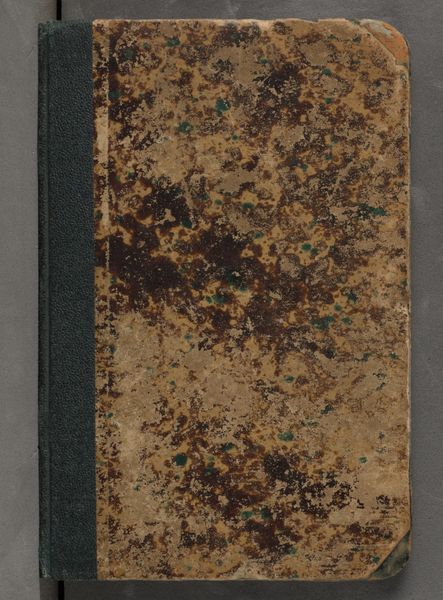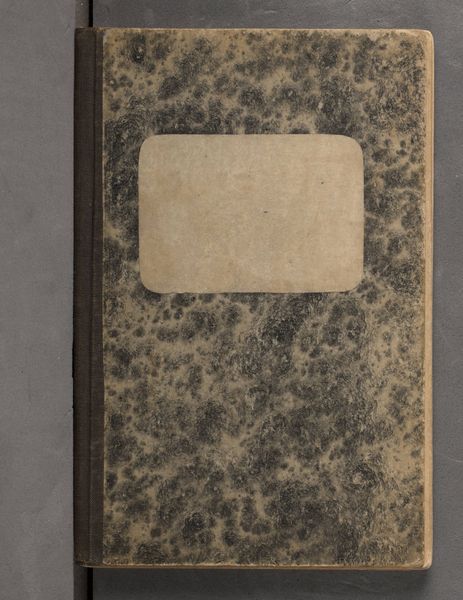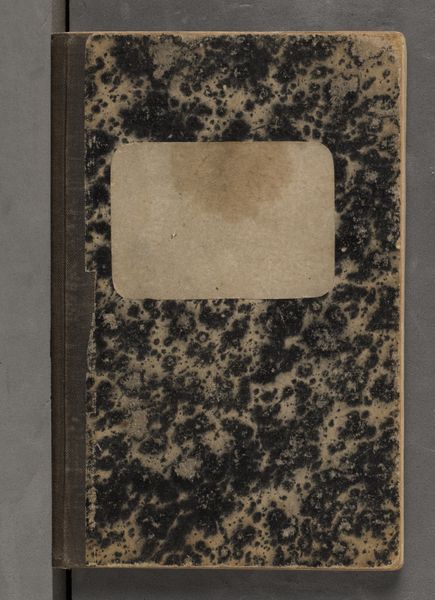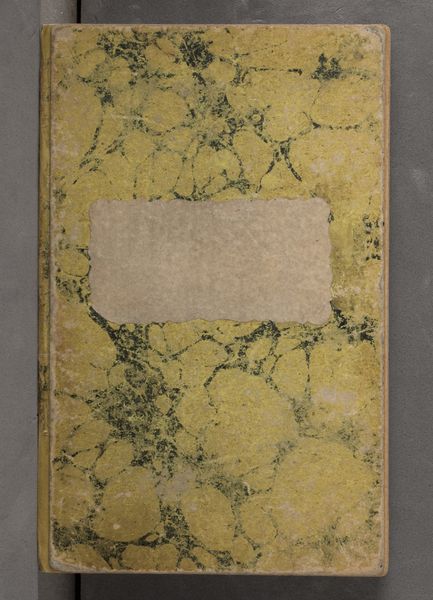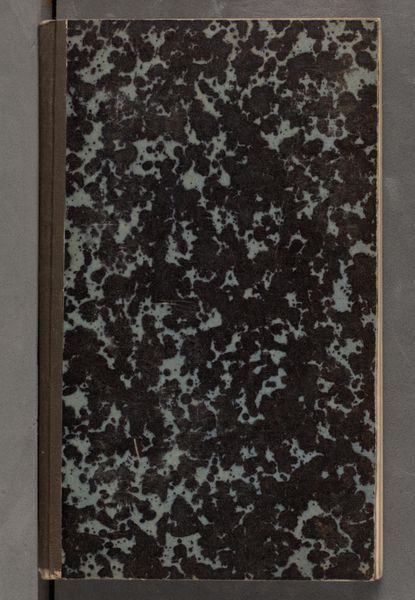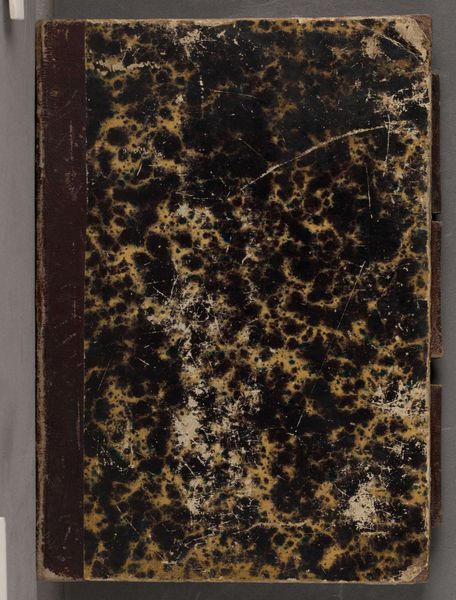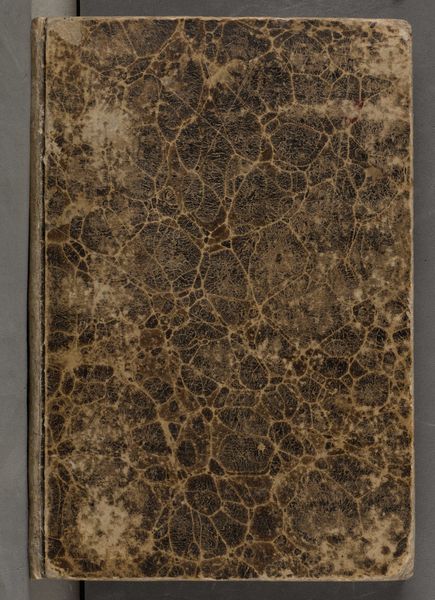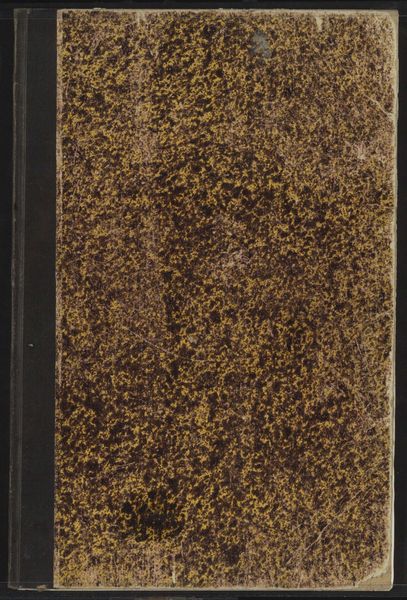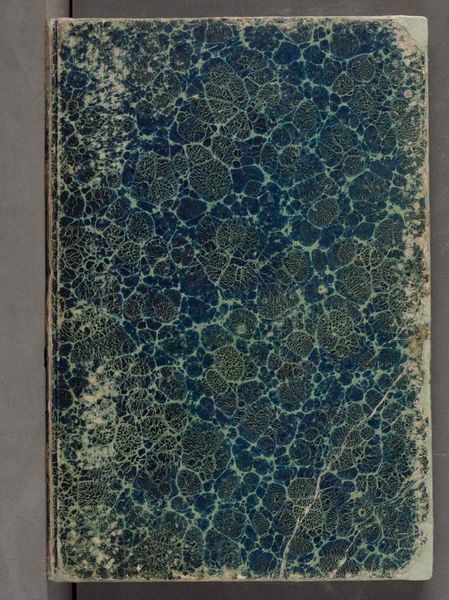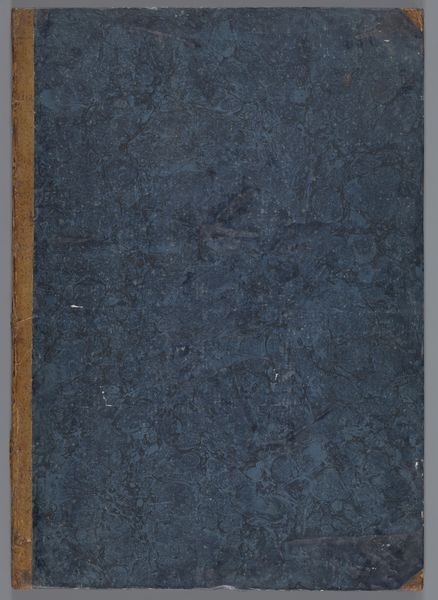
cardboard, drawing
#
cardboard
#
drawing
#
16_19th-century
#
book
#
german
#
cardboard
#
decorative-art
Copyright: Public Domain
Editor: Here we have Ludwig Metz's "Skizzenbuch," a sketchbook made with drawing on cardboard, created between 1868 and 1884. It has an interesting marbled effect. It kind of reminds me of looking at microscopic cells. What do you see in this piece? Curator: I see the weight of untold stories, Editor. A book, especially a sketchbook, acts as a potent symbol across cultures. What kind of information, stories or visual records does the marbled cover bring to mind? Does it suggest a specific era or tradition, before even opening it? Editor: Hmmm... the marbling does look quite traditional... suggesting the containment of artistic endeavors, maybe? Curator: Precisely! Marbling itself is a fascinating technique with a long history, often associated with luxury and craftsmanship. Its swirling patterns can represent the complexities of the mind or the natural world, a contained chaos about to be unleashed by the artist's hand. Think about how the blank label invites us to imagine the owner's name, or the subject that fills the pages. Do we approach it with reverence, curiosity, or something else? Editor: I guess that unmarked label does make it universal, rather than specific to Metz himself...I hadn't thought of it like that. It's almost an invitation to see *myself* as the artist! Curator: And that, ultimately, is the power of a symbol – its capacity to resonate across time and touch each individual in a unique way. Editor: I can definitely see how something as seemingly simple as a sketchbook can carry so much cultural baggage! Thank you for your perspective.
Comments
stadelmuseum about 2 years ago
⋮
The drawings in this small sketchbook are only partly dated and mostly barely legible; the dates span the years 1868 (August/September), 1870 (June), 1883 and 1884 (February) ‒ not always in chronological order and even the decipherable topographical details are somewhat disparate. The journey in spring 1868 seems to have led Metz along the river Lahn further into Alsace (?). In June 1870, he drew at Lake Geneva and in Italy, among other places in Rome, near Ariccia and on Monte Mario, and, in February 1884, apparently again in Italy. Except for a sky subtly coloured with blue pencil, all drawings are made with pencil and mostly in landscape format, mainly sketched out quickly.He depicted mainly full-page views of the landscape, with a striking, often dilapidated building or village in the centre, and very often depictions of fountains, and occasionally aqueducts and dams. In view of this motif, which remained the same over the course of several journeys, one might think that Metz structured his sketchbooks thematically, at least occasionally, and in this case focused on buildings connected with the provision and regulation of water.For a full sketchbook description, please see “Research”.
Join the conversation
Join millions of artists and users on Artera today and experience the ultimate creative platform.

